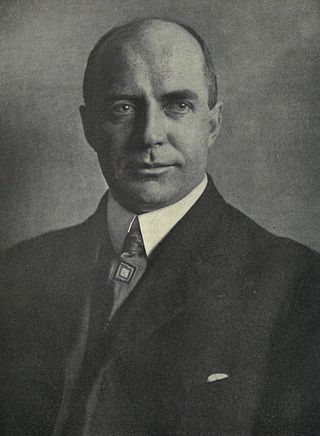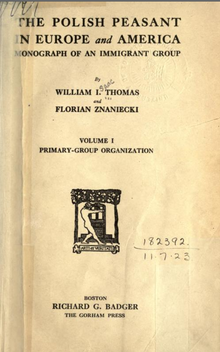
A peasant is a pre-industrial agricultural laborer or a farmer with limited land-ownership, especially one living in the Middle Ages under feudalism and paying rent, tax, fees, or services to a landlord. In Europe, three classes of peasants existed: non-free slaves, semi-free serfs, and free tenants. Peasants might hold title to land outright, or by any of several forms of land tenure, among them socage, quit-rent, leasehold, and copyhold.
Life history is an interviewing method used to record autobiographical history from an ordinary person's perspective, often gathered from traditionally marginalized groups. It was begun by anthropologists studying Native American groups around the 1900s, and was taken up by sociologists and other scholars, though its popularity has waxed and waned since. One of the major strengths of the life history method is that it provides a kind of voice from a social milieu that is often overlooked or indeed invisible in intellectual discourse.

Science studies is an interdisciplinary research area that seeks to situate scientific expertise in broad social, historical, and philosophical contexts. It uses various methods to analyze the production, representation and reception of scientific knowledge and its epistemic and semiotic role.
The Chicago school refers to a school of thought in sociology and criminology originating at the University of Chicago whose work was influential in the early 20th century.

Florian Witold Znaniecki was a Polish and American philosopher and sociologist who taught and wrote in Poland and in the United States. Over the course of his work, he shifted his focus from philosophy to sociology. He remains a major figure in the history of Polish and American sociology; the founder of Polish academic sociology, and of an entire school of thought in sociology. He won international renown as co-author, with William I. Thomas, of the study, The Polish Peasant in Europe and America (1918–1920), which is considered the foundation of modern empirical sociology. He also made major contributions to sociological theory, introducing terms such as humanistic coefficient and culturalism.

Sociology as a scholarly discipline emerged, primarily out of Enlightenment thought, as a positivist science of society shortly after the French Revolution. Its genesis owed to various key movements in the philosophy of science and the philosophy of knowledge, arising in reaction to such issues as modernity, capitalism, urbanization, rationalization, secularization, colonization and imperialism.
Herbert George Blumer was an American sociologist whose main scholarly interests were symbolic interactionism and methods of social research. Believing that individuals create social reality through collective and individual action, he was an avid interpreter and proponent of George Herbert Mead's social psychology, which he labeled symbolic interactionism. Blumer elaborated and developed this line of thought in a series of articles, many of which were brought together in the book Symbolic Interactionism. An ongoing theme throughout his work, he argued that the creation of social reality is a continuous process. Blumer was also a vociferous critic of positivistic methodological ideas in sociology.
Humanistic sociology is a domain of sociology which originated mainly from the work of the University of Chicago Polish philosopher-turned-sociologist, Florian Znaniecki. It is a methodology which treats its objects of study and its students, that is, humans, as composites of values and systems of values. In certain contexts, the term is related to other sociological domains such as antipositivism. Humanistic sociology seeks to shed light on questions such as, "What is the relationship between a man of principle and a man of opportunism?"

William Isaac Thomas was an American sociologist, understood today as a key figure behind the theory of symbolic interactionism.
Analytic induction is a research strategy in sociology aimed at systematically developing causal explanations for types of phenomena. It was first outlined by Florian Znaniecki in 1934. He contrasted it with the kind of enumerative induction characteristic of statistical analysis. Where the latter was satisfied with probabilistic correlations, Znaniecki insisted that science is concerned with discovering causal universals, and that in social science analytic induction is the means of discovering these.
The life course approach, also known as the life course perspective or life course theory, refers to an approach developed in the 1960s for analyzing people's lives within structural, social, and cultural contexts. It views one's life as a socially sequenced timeline and recognizes the importance of factors such as generational succession and age in shaping behavior and career. Development does not end at childhood, but instead extends through multiple life stages to influence life trajectory.
Everett Cherrington Hughes was an American sociologist best known for his work on ethnic relations, work and occupations and the methodology of fieldwork. His take on sociology was, however, very broad. In recent scholarship, his theoretical contribution to sociology has been discussed as interpretive institutional ecology, forming a theoretical frame of reference that combines elements of the classical ecological theory of class, and elements of a proto-dependency analysis of Quebec's industrialization in the 1930s.
A humanistic coefficient is a conceptual object, methodological principle, or method of conducting social research wherein data analysis stresses the perceived import of analyzed experiences to their participants. The term was coined by Polish sociologist Florian Znaniecki.
The following events related to sociology occurred in the 1910s.

Sociology in Poland has been developing, as has sociology throughout Europe, since the mid-19th century. Although, due to the Partitions of Poland, that country did not exist as an independent state in the 19th century or until the end of World War I, some Polish scholars published work clearly belonging to the field of sociology.

The history of the family is a branch of social history that concerns the sociocultural evolution of kinship groups from prehistoric to modern times. The family has a universal and basic role in all societies. Research on the history of the family crosses disciplines and cultures, aiming to understand the structure and function of the family from many viewpoints. For example, sociological, ecological or economical perspectives are used to view the interrelationships between the individual, their relatives, and the historical time. The study of family history has shown that family systems are flexible, culturally diverse and adaptive to ecological and economical conditions.
Helena Znaniecki Lopata was a Polish-born American sociologist, author and researcher.
In philosophy and sociology, culturalism is the central importance of culture as an organizing force in human affairs. It is also described as an ontological approach that seeks to eliminate simple binaries between seemingly opposing phenomena such as nature and culture.

Martyn Hammersley is a British sociologist whose main publications cover social research methodology and philosophical issues in the social sciences.
Biographical research is a qualitative research approach aligned to the social interpretive paradigm of research. The biographical research is concerned with the reconstruction of life histories and the constitution of meaning based on biographical narratives and documents. The material for analysis consists of interview protocols (memorandums), video recordings, photographs, and a diversity of sources. These documents are evaluated and interpreted according to specific rules and criteria. The starting point for this approach is the understanding of an individual biography in terms of its social constitution. The biographical approach was influenced by the symbolic interactionism, the phenomenological sociology of knowledge, and ethnomethodology. Therefore, biography is understood in terms of a social construct and the reconstruction of biographies can give insight on social processes and figurations, thus helping to bridge the gap between micro-, meso-, and macro- levels of analysis. The biographical approach is particularly important in German sociology. This approach is used in the Social Sciences as well as in Pedagogy and other disciplines. The Research Committee 38 "Biography and Society" of the International Sociological Association (ISA) was created in 1984 and is dedicated "to help develop a better understanding of the relations between individual lives, the social structures and historical processes within which they take shape and which they contribute to shape, and the individual accounts of biographical experience ".






